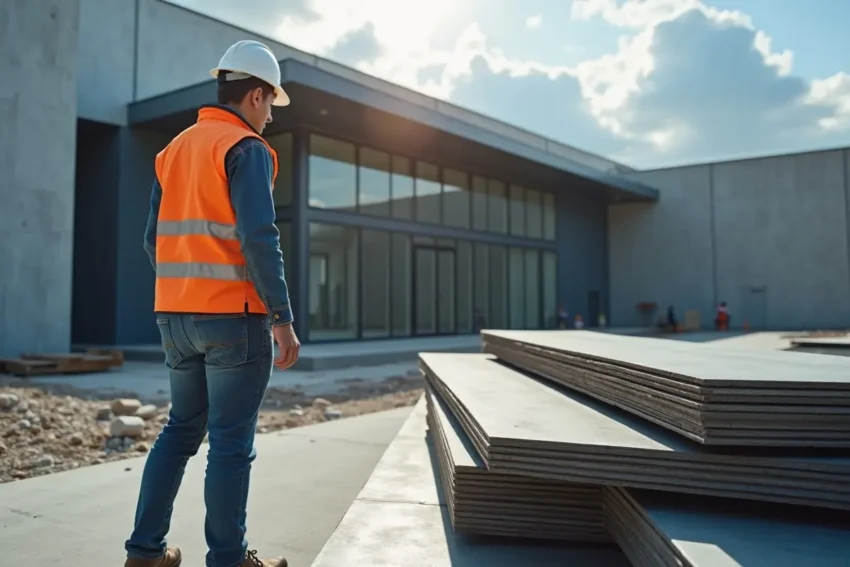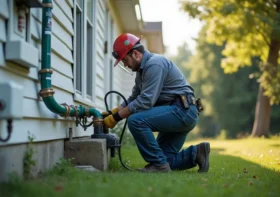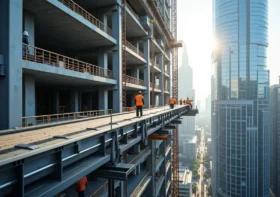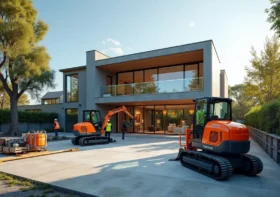How to Future-Proof Metal Buildings Through Smarter Material Choices

In an era where energy efficiency is as important as structural durability, metal buildings are being pushed to meet increasingly high-performance standards. From warehouses and agricultural sheds to modern commercial facilities, these buildings are prized for their speed of assembly and strength—but they’ve also gained a reputation for being thermal sieves.
Without proper insulation, they bleed energy in both hot and cold climates. As building regulations tighten and energy costs climb, insulation has gone from afterthought to essential.
Contents
The Thermal Challenge of Metal Structures
Unlike brick or timber, metal conducts heat rapidly. This means that in summer, a metal building can quickly become a sweltering oven, while in winter, any interior heat escapes almost as fast as it’s generated. These thermal swings aren’t just uncomfortable; they can also damage stored materials, drive up utility bills, and undermine equipment performance. The solution? High-quality insulation tailored to metal structures.
Roofs play a major role in controlling these temperature swings, as they are the first line of defense against heat and moisture. Proper roofing materials and installation can significantly improve a building’s energy efficiency. For larger projects or replacements, consider working with an affordable, insured metal roofing contractor in Palm City, FL to ensure long-lasting protection.
But insulation is not one-size-fits-all. Performance varies widely depending on the type of insulation, the building’s intended use, and even its location. That’s why choosing the right insulation supplier matters just as much as choosing the insulation product itself.
Another effective strategy is to combine high-quality insulation with building materials that add thermal mass and durability. For example, well-chosen masonry can help moderate interior temperatures and reduce peak heating and cooling demands; working with an independent brick supplier ensures the brick types and specifications suit the building’s climate and condensation-control requirements. In hybrid metal-and-masonry designs, this coordination can improve overall performance without compromising moisture management. Asking suppliers for case studies or climate-specific recommendations helps integrate masonry and insulation into a cohesive envelope strategy.
What to Consider When Choosing an Insulation Supplier
There are many suppliers offering thermal solutions, but not all are equipped to meet the unique needs of metal buildings. A knowledgeable supplier can help you select insulation that maintains interior temperature, meets code requirements, and holds up over time. The best ones will also understand the importance of proper installation methods for maximizing R-values and minimizing thermal bridging.
One example of a trusted supplier in this space is bluetexinsulation.com. They specialize in energy-efficient insulation types specifically engineered for metal buildings, including reflective insulation systems that reduce radiant heat gain. Their approach considers not just thermal performance, but also condensation control, fire resistance, and ease of installation.
Beyond R-Value: Durability and Moisture Control
R-value, which measures thermal resistance, is only part of the equation. Metal buildings are particularly vulnerable to condensation, especially in climates with large temperature swings. Moisture can lead to rust, mold, and structural degradation if not properly managed. An experienced supplier will help you find materials that include vapor barriers or integrated moisture controls that protect your building envelope long-term.
Durability is another key factor. Industrial environments can be harsh, so you want insulation that won’t sag, degrade, or require frequent replacement. Quality materials are tested for tensile strength, UV resistance, and resistance to tearing or puncturing. A good supplier should provide clear specs and support documentation.
Tailored Systems for Specific Use Cases
Insulation for a metal home office has different requirements than for a livestock barn. One needs acoustic control and aesthetic finish options, while the other may prioritize hygiene and temperature regulation. Reputable suppliers offer tailored solutions instead of pushing a single product across all applications. Ask for case studies, performance data, and customization options based on your specific building type and usage.
Installation support is also essential. Even the best product underperforms when installed poorly. Look for companies that offer installation guides, technical support, or referrals to trained installers. This ensures your building gets the full benefit of the insulation’s capabilities.
Sustainability and Long-Term Payoffs
High-performance insulation not only reduces energy bills, but also minimizes your building’s environmental footprint. Some systems qualify for tax incentives or credits under energy-efficiency programs. Over time, the ROI of proper insulation becomes clear—not just in lower operational costs, but in building value and compliance readiness.
As climate-conscious design becomes a standard expectation, selecting an insulation system that aligns with these goals is a smart move. Materials that are recyclable, non-toxic, and sustainably sourced are increasingly available, and forward-thinking suppliers will make these part of their offerings.
Final Thoughts
Thermal performance is no longer a nice-to-have; it’s a core component of any modern metal building. From energy efficiency to occupant comfort and structural integrity, insulation plays a decisive role in long-term success. Choosing the right supplier—one that understands your needs, offers high-quality materials, and supports proper implementation—is just as crucial as the product itself. Take the time to compare options, look beyond the marketing claims, and select a partner who will help your building perform at its best for years to come.



